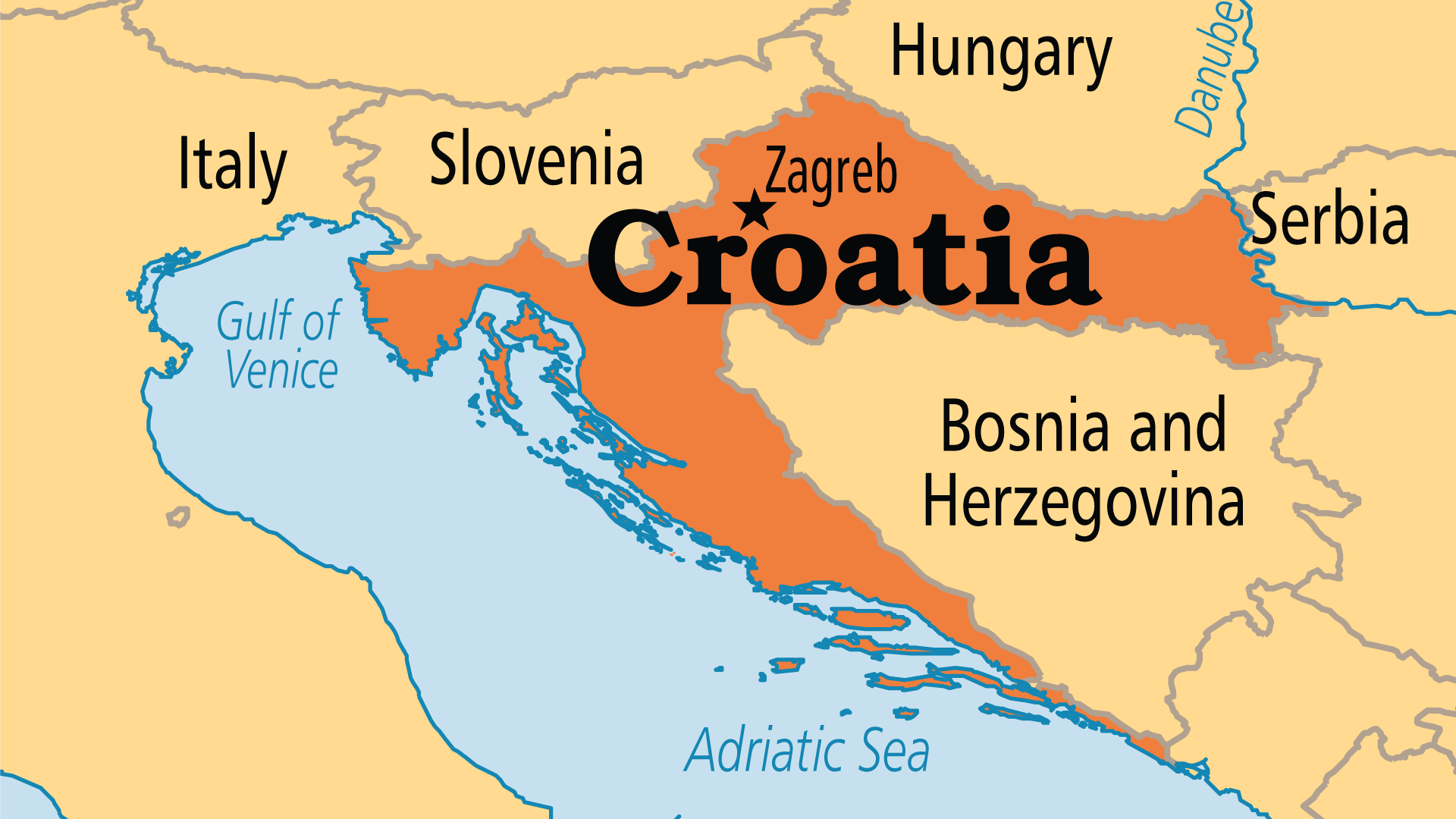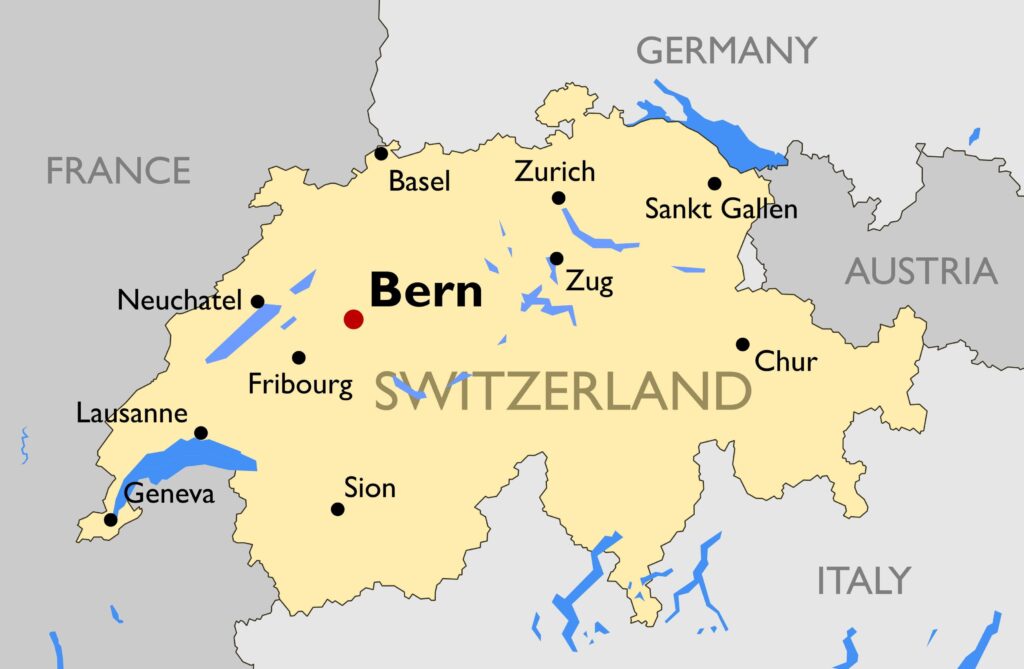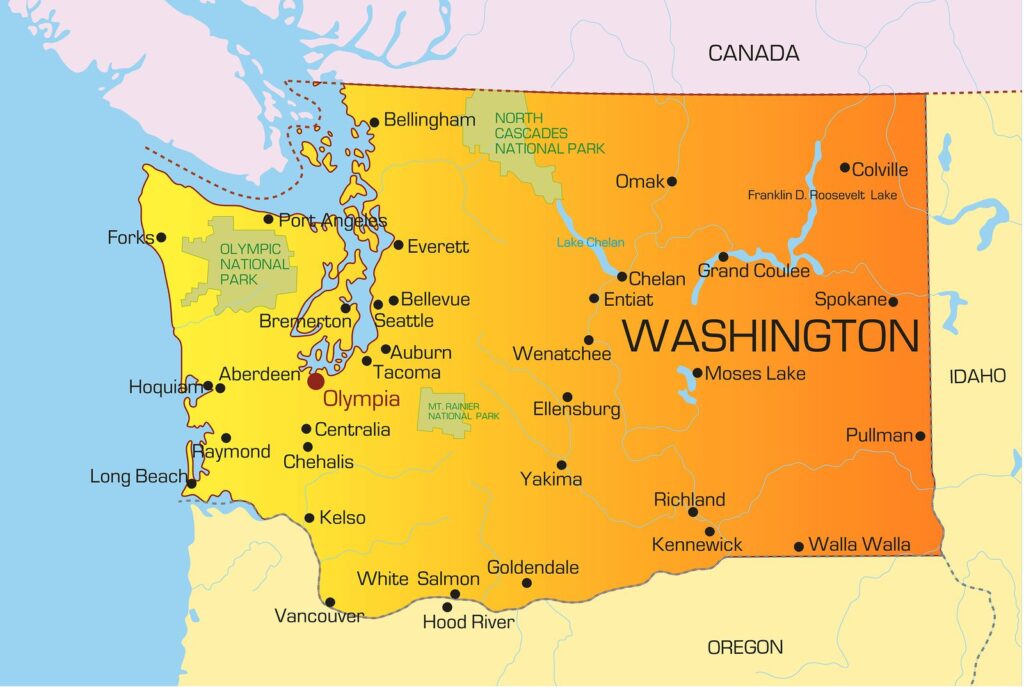Croatia, a stunning country located at the crossroads of Central and Southeast Europe, is known for its rich history, diverse culture, and breathtaking landscapes. This comprehensive guide delves into various aspects of Croatia, including its geography, history, culture, economy, and more, providing an in-depth look at this fascinating nation.
Introduction to Croatia
Croatia, officially known as the Republic of Croatia, is a country situated along the Adriatic Sea. It shares borders with Slovenia to the northwest, Hungary to the northeast, Serbia to the east, Bosnia and Herzegovina to the southeast, and Montenegro to the southeast. Croatia’s coastline, dotted with more than a thousand islands, is renowned for its crystal-clear waters and historic coastal towns.
Geography of Croatia
Croatia’s geography is incredibly diverse, encompassing vast plains, low mountains, and a long coastline. The country can be divided into three main geographical regions: the Pannonian and Peri-Pannonian Plains, the Dinaric Alps, and the Adriatic coast.
Pannonian and Peri-Pannonian Plains
Located in the northern part of the country, this region includes fertile agricultural lands and river valleys. The plains are characterized by their flat to gently rolling terrain and are home to major cities such as Zagreb, the capital, and Osijek.
Dinaric Alps
The Dinaric Alps stretch across the western part of Croatia, running parallel to the Adriatic coast. This mountainous region features rugged terrain, limestone karst landscapes, and dense forests. The highest peak, Dinara, rises to 1,831 meters (6,007 feet).
Adriatic Coast
The Adriatic coast is perhaps the most famous and picturesque region of Croatia. With over 1,200 islands, islets, and reefs, the coastline is a major tourist destination. Prominent cities along the coast include Dubrovnik, Split, and Zadar. The coast is known for its Mediterranean climate, with hot, dry summers and mild, wet winters.
Climate of Croatia
Croatia experiences a variety of climates due to its diverse geography.
Mediterranean Climate
The coastal regions of Croatia enjoy a Mediterranean climate, characterized by hot, dry summers and mild, wet winters. This climate is ideal for tourism, agriculture, and the cultivation of Mediterranean crops such as olives and grapes.
Continental Climate
The interior regions of Croatia, including the Pannonian Plains and the mountainous areas, have a continental climate. This climate features cold winters with significant snowfall and warm summers. The continental climate supports a range of agricultural activities and forestry.
Alpine Climate
The higher elevations of the Dinaric Alps experience an alpine climate, with cold, snowy winters and cool summers. This climate zone supports alpine flora and fauna and offers opportunities for winter sports.
History of Croatia
Croatia’s history is rich and complex, influenced by various cultures and civilizations over the centuries.
Ancient and Medieval Periods
Croatia has been inhabited since prehistoric times, with evidence of human activity dating back to the Paleolithic era. The region was later settled by Illyrian tribes, followed by the Greeks and Romans. During the Roman period, Croatia was part of the provinces of Dalmatia and Pannonia.
In the early medieval period, Slavic tribes migrated to the region, establishing several principalities. The first Croatian kingdom was formed in the 10th century under King Tomislav. Throughout the medieval period, Croatia was influenced by various European powers, including the Byzantine Empire, the Kingdom of Hungary, and the Republic of Venice.
Habsburg and Ottoman Rule
In the early modern period, Croatia was divided between the Habsburg Monarchy and the Ottoman Empire. The Habsburgs controlled the northern and western regions, while the Ottomans occupied the central and eastern parts. This period was marked by frequent conflicts and shifting borders.
19th and 20th Centuries
The 19th century saw the rise of Croatian nationalism and efforts to achieve greater autonomy within the Habsburg Monarchy. Following World War I and the dissolution of the Austro-Hungarian Empire, Croatia became part of the Kingdom of Serbs, Croats, and Slovenes (later known as Yugoslavia).
After World War II, Croatia was one of the six republics of socialist Yugoslavia. The 1990s were a turbulent period, with Croatia declaring independence in 1991, leading to the Croatian War of Independence. The war ended in 1995, and Croatia was internationally recognized as an independent state.
Modern Croatia
Since gaining independence, Croatia has made significant progress in political and economic reforms. The country joined the European Union in 2013 and has become a popular tourist destination. Today, Croatia is a democratic republic with a stable political system and a growing economy.
Political System
Croatia is a parliamentary republic with a democratic political system.
Executive Branch
The President of Croatia serves as the head of state and is elected by popular vote for a five-year term. The President’s role is largely ceremonial, but they have some important powers, including commanding the armed forces and representing the country in foreign affairs.
The Prime Minister is the head of government and is appointed by the President, subject to the approval of the Parliament. The Prime Minister leads the executive branch and is responsible for running the government and implementing laws.
Legislative Branch
The Croatian Parliament, known as the Sabor, is a unicameral legislative body. It is composed of representatives elected by proportional representation for four-year terms. The Parliament enacts laws, approves the budget, and oversees the work of the government.
Judicial Branch
The judicial system in Croatia is independent and includes several levels of courts. The highest court is the Supreme Court, which ensures the uniform application of laws. The Constitutional Court reviews the constitutionality of laws and protects human rights and freedoms.
Economy of Croatia
Croatia has a diverse and growing economy, characterized by a mix of traditional industries and modern sectors.
Key Industries
- Tourism: Tourism is a major contributor to the Croatian economy, attracting millions of visitors each year to its coastal resorts, historic cities, and natural parks.
- Agriculture: Agriculture plays a significant role, with important products including olives, grapes, wheat, corn, and various fruits and vegetables.
- Manufacturing: The manufacturing sector includes shipbuilding, machinery, chemicals, and textiles.
- Services: The services sector, particularly banking, finance, and real estate, is a significant part of the economy.
Trade and Exports
Croatia’s main trading partners are the European Union countries, particularly Germany, Italy, and Slovenia. Major exports include machinery, transport equipment, chemicals, and food products. Croatia also imports machinery, fuels, chemicals, and consumer goods.
Economic Challenges
Despite its progress, Croatia faces several economic challenges, including high unemployment, regional disparities, and a need for structural reforms. The government is working to improve the business environment, attract foreign investment, and enhance competitiveness.
Culture of Croatia
Croatia’s culture is a rich blend of influences from Central Europe, the Mediterranean, and the Balkans.
Language
The official language of Croatia is Croatian, a South Slavic language written in the Latin script. It is spoken by the vast majority of the population. There are also minority languages, including Serbian, Italian, Hungarian, and Czech.
Religion
The predominant religion in Croatia is Roman Catholicism, followed by the majority of the population. There are also small communities of Orthodox Christians, Muslims, and Protestants.
Festivals and Traditions
Croatia is known for its vibrant festivals and cultural traditions. Some notable events include:
- Dubrovnik Summer Festival: A major cultural event featuring theater, music, and dance performances in the historic city of Dubrovnik.
- Sinjska Alka: A traditional equestrian competition held annually in the town of Sinj, commemorating a historical battle against the Ottomans.
- Carnival: Celebrated in various cities, including Rijeka and Samobor, with parades, costumes, and festivities.
Cuisine
Croatian cuisine varies by region, reflecting the country’s diverse geography and cultural influences. Some traditional dishes include:
- Peka: A method of cooking meat and vegetables under a bell-like dome, often served with potatoes and herbs.
- Black Risotto: A seafood dish made with cuttlefish or squid, flavored with garlic, wine, and squid ink.
- Ćevapi: Grilled minced meat sausages, often served with flatbread and onions.
- Strukli: A pastry filled with cheese, apples, or other ingredients, commonly found in the Zagorje region.
Major Cities and Landmarks
Zagreb
Zagreb is the capital and largest city of Croatia. It is the political, economic, and cultural center of the country. Notable landmarks include the historic Upper Town, St. Mark’s Church, the Cathedral of Zagreb, and the Museum of Broken Relationships.
Dubrovnik
Dubrovnik, known as the “Pearl of the Adriatic,” is a UNESCO World Heritage site famous for its well-preserved medieval walls, historic old town, and stunning coastal views. Key attractions include the Stradun promenade, the Rector’s Palace, and the Lovrijenac Fortress.
Split
Split is the second-largest city in Croatia, located on the Dalmatian coast. It is known for the Diocletian’s Palace, a UNESCO World Heritage site, as well as its vibrant waterfront, Marjan Hill, and the Cathedral of Saint Domnius.
Zadar
Zadar is a historic city on the Adriatic coast, known for its Roman and Venetian ruins, medieval churches, and unique attractions such as the Sea Organ and the Greeting to the Sun.
Plitvice Lakes National Park
Plitvice Lakes National Park is one of Croatia’s most famous natural landmarks. It features a series of cascading lakes and waterfalls surrounded by lush forests. The park is a UNESCO World Heritage site and a popular destination for hiking and nature enthusiasts.
Transportation in Croatia
Road Network
Croatia has a well-developed road network, including highways (autoceste) that connect major cities and regions. The A1 highway, also known as the “Dalmatina,” runs from Zagreb to Split and further south to Dubrovnik.
Railways
The Croatian railway network connects major cities and regions, with international links to neighboring countries. The main railway hub is in Zagreb, providing connections to cities such as Split, Rijeka, and Osijek.
Air Travel
Croatia has several international airports, with the main ones located in Zagreb, Split, Dubrovnik, and Zadar. Croatia Airlines is the national carrier, offering domestic and international flights.
Maritime Transport
Given its long coastline, maritime transport is essential in Croatia. Major ports include Rijeka, Split, and Dubrovnik, serving both cargo and passenger traffic. Ferries and catamarans connect the mainland with various islands.
Education and Healthcare
Education System
The Croatian education system is divided into primary, secondary, and higher education. Primary education is compulsory and lasts for eight years. Secondary education includes general, vocational, and artistic programs. Higher education is provided by universities, polytechnics, and colleges.
Notable universities in Croatia include the University of Zagreb, the University of Split, and the University of Rijeka.
Healthcare System
Croatia has a universal healthcare system funded by mandatory health insurance contributions. The healthcare system includes primary, secondary, and tertiary care, with services provided by public and private healthcare institutions. Major hospitals are located in cities such as Zagreb, Split, and Rijeka.
Economy and Trade
Currency
The official currency of Croatia is the Croatian Kuna (HRK). The Kuna is subdivided into 100 lipa. As of 2023, Croatia adopted the euro (EUR) alongside the Kuna, with plans to fully transition to the euro in the coming years.
Foreign Investment
Croatia has been attracting foreign investment in various sectors, including tourism, real estate, manufacturing, and renewable energy. The government offers incentives and support for foreign investors to stimulate economic growth and development.
Economic Challenges
Croatia faces economic challenges such as high public debt, unemployment, and regional disparities. The government is focused on implementing reforms to improve the business environment, enhance competitiveness, and promote sustainable growth.
Fun and Interesting Facts about Croatia
- Game of Thrones: Croatia’s stunning landscapes and historic sites have been featured in the popular TV series “Game of Thrones.” Dubrovnik, in particular, served as the primary filming location for King’s Landing.
- Nikola Tesla: The famous inventor and electrical engineer Nikola Tesla was born in Smiljan, a village in present-day Croatia.
- Glagolitic Script: Croatia is one of the few countries that used the Glagolitic script, the oldest known Slavic alphabet, developed in the 9th century.
- Inventors: Croatian inventor Slavoljub Penkala created the mechanical pencil and the first solid-ink fountain pen.
- Necktie Origin: The necktie, or cravat, originated in Croatia. Croatian soldiers in the 17th century wore scarves around their necks, which later evolved into the modern necktie.
Commonly Asked Questions about Croatia
What continent is Croatia in the map?
Croatia is located in Europe, specifically in the central and southeast regions of the continent, along the Adriatic Sea.
What is the main island of Croatia called?
The largest island in Croatia is Krk, located in the northern Adriatic Sea.
What type of geographic feature is Croatia?
Croatia features a diverse geography that includes plains, mountains, and a long coastline with numerous islands.
What is Croatia’s most famous landmark?
One of Croatia’s most famous landmarks is Dubrovnik’s Old Town, a UNESCO World Heritage site known for its medieval walls and historic architecture.
What type of climate is Croatia?
Croatia has a Mediterranean climate along the coast, a continental climate in the interior regions, and an alpine climate in the higher elevations of the Dinaric Alps.
What is special about Croatia?
Croatia is known for its stunning coastline, rich cultural heritage, historic cities, and natural beauty, making it a popular tourist destination.
What type of boundary is Croatia?
Croatia has both land and maritime boundaries, sharing land borders with Slovenia, Hungary, Serbia, Bosnia and Herzegovina, and Montenegro, and maritime borders along the Adriatic Sea.
What is Croatia’s major landforms?
Major landforms in Croatia include the Dinaric Alps, the Pannonian Plains, and the extensive Adriatic coastline with numerous islands.
What are two physical features of Croatia?
Two notable physical features of Croatia are the Plitvice Lakes, a series of cascading lakes and waterfalls, and the rugged peaks of the Dinaric Alps.
Where does Fiji water come from?
This question seems to be misplaced. Regarding Croatia, a relevant question would be: Where does Croatian spring water come from?
Croatian spring water comes from various natural sources across the country, including the pristine springs in the mountainous regions and the Plitvice Lakes area.
Conclusion
Croatia is a country of remarkable diversity and beauty, offering a rich tapestry of history, culture, and natural wonders. From its ancient towns and historic landmarks to its stunning coastline and vibrant traditions, Croatia captivates visitors and researchers alike. This comprehensive guide provides an in-depth look at Croatia’s geography, history, economy, culture, and more, helping you understand and appreciate this fascinating nation. Whether you are planning a visit, studying its history, or simply curious about this Adriatic gem, Croatia’s maps and facts reveal a land of incredible charm and significance.
- 10 Interesting Facts About Equatorial Guinea - October 1, 2024
- 10 Biggest Airports In The United States - September 29, 2024
- 10 Animals That Live In Coniferous Forests - September 29, 2024




